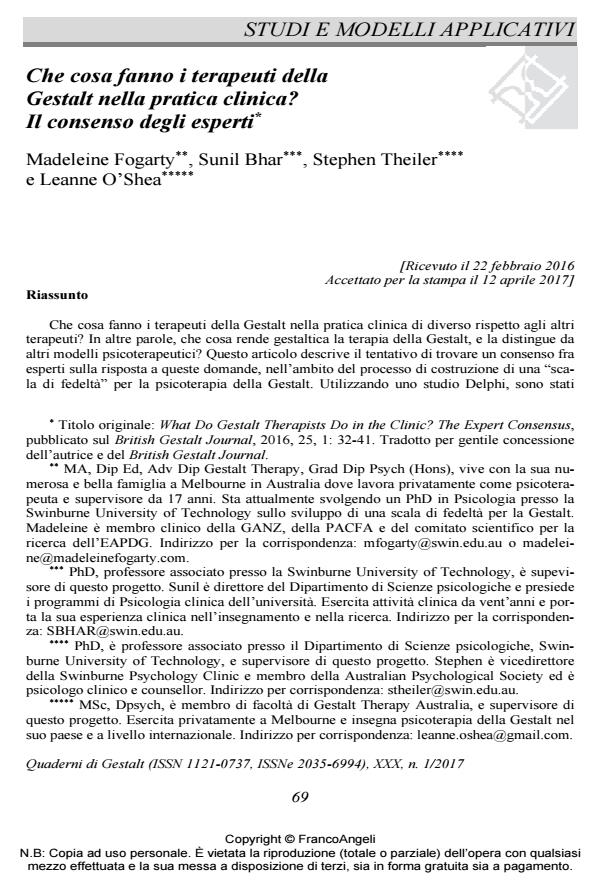What Do Gestalt Therapist Do in the Clinic? The Expert Consensus
Journal title QUADERNI DI GESTALT
Author/s Madeleine Fogarty, Sunil Bhar, Stephen Theiler, Leanne O’Shea
Publishing Year 2017 Issue 2017/1
Language Italian Pages 22 P. 69-90 File size 251 KB
DOI 10.3280/GEST2017-001006
DOI is like a bar code for intellectual property: to have more infomation
click here
Below, you can see the article first page
If you want to buy this article in PDF format, you can do it, following the instructions to buy download credits

FrancoAngeli is member of Publishers International Linking Association, Inc (PILA), a not-for-profit association which run the CrossRef service enabling links to and from online scholarly content.
What it is that Gestalt therapists do in the clinic that is different from other therapists? What is it, in other words, that makes Gestalt Therapy Gestalt, and distinguishes it from other psychotherapeutic modalities? This article describes the process of finding an expert consensus about these questions as part of the process of developing a "fidelity scale" for Gestalt therapy. Using a Delphi study, eight key concepts that characterize Gestalt therapy were identified, together with the therapist behaviours that reflect those concepts.
Keywords: Gestalt, fidelity scale, Delphi study, developing awareness, working relationally, working in the here and now, phenomenological practice, working with embodiment, field sensitive practice, contacting processes, experimental attitude.
Madeleine Fogarty, Sunil Bhar, Stephen Theiler, Leanne O’Shea, Che cosa fanno i terapeuti della Gestalt nella pratica clinica? Il consenso degli esperti in "QUADERNI DI GESTALT" 1/2017, pp 69-90, DOI: 10.3280/GEST2017-001006